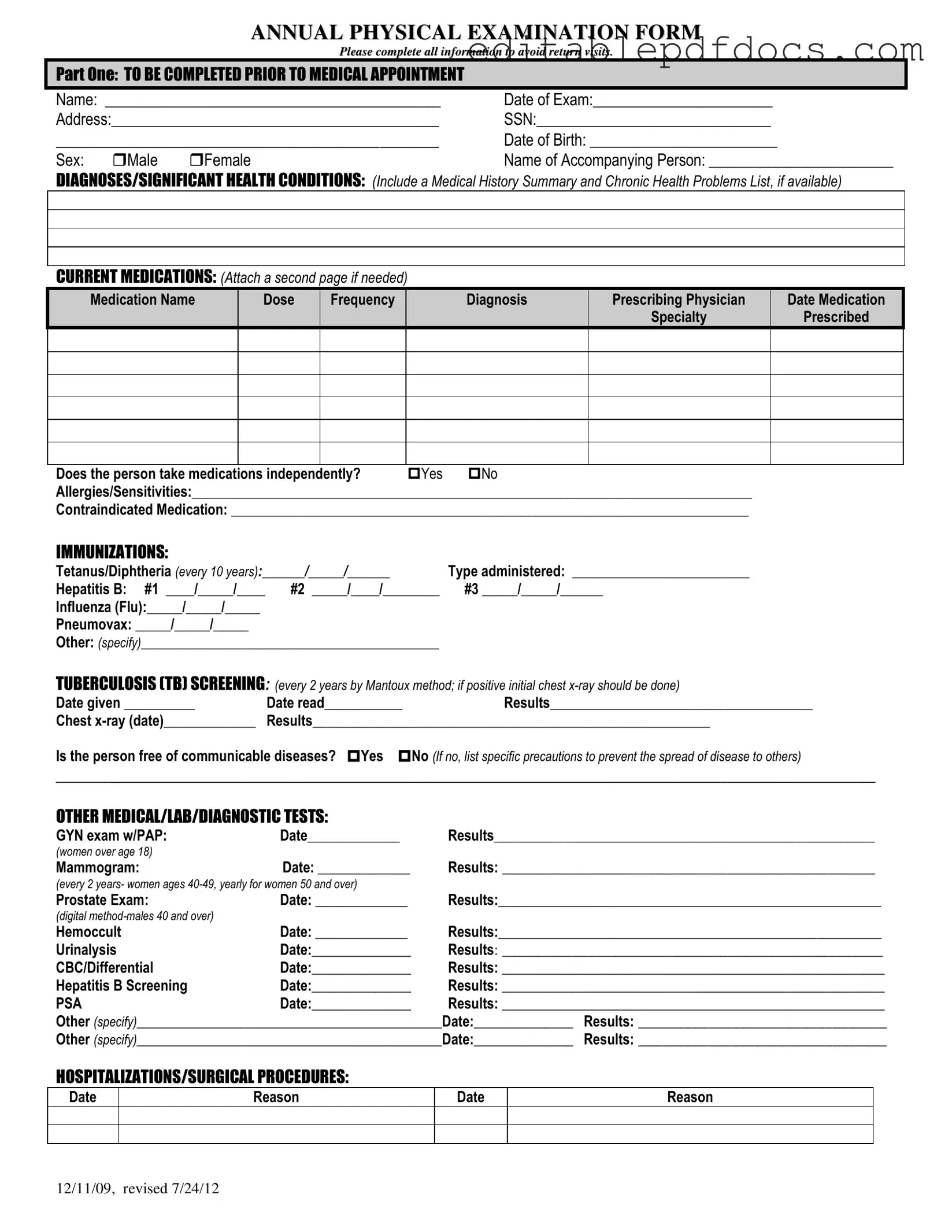The Annual Physical Examination form serves as a comprehensive tool designed to gather essential health information from individuals prior to their medical appointments. This form includes multiple sections that require the completion of personal details, such as name, date of birth, and address, ensuring that healthcare providers have accurate records. It prompts patients to disclose significant health conditions, current medications, and any allergies or sensitivities they may have, which is crucial for safe and effective treatment. Immunization history is also documented, covering vaccines like Tetanus, Hepatitis B, and Influenza, alongside any tuberculosis screening results. Additionally, the form captures data on past hospitalizations and surgical procedures, providing a fuller picture of the patient’s medical history. The physical examination section includes vital signs and evaluations of various body systems, allowing for a thorough assessment of the individual’s overall health. Recommendations for health maintenance, dietary guidelines, and any necessary follow-up evaluations are also noted, ensuring that patients receive personalized care tailored to their specific needs. Overall, this form not only facilitates effective communication between patients and healthcare providers but also plays a vital role in promoting proactive health management.
